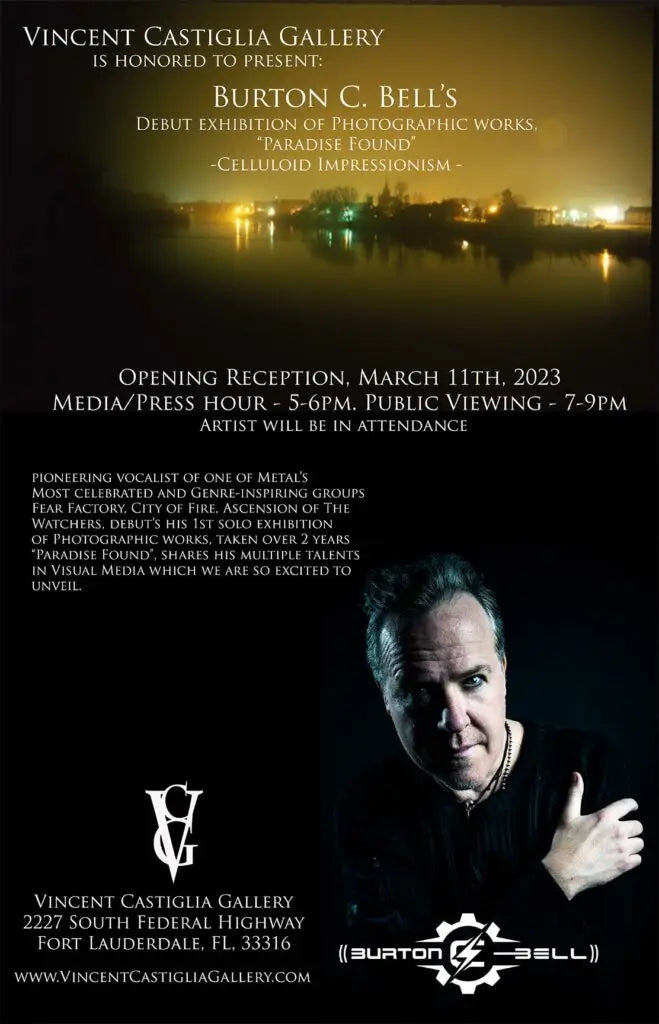Back in 2002, game-changing vocalist and industrial metal fixture Burton C. Bell found himself in central Pennsylvania nestled in the Susquehanna Valley. Intent on finding a secluded working environment to better focus on writing and recording music, Burton immersed himself in his surroundings and came upon a once thriving manufacturing hub in the small nearby city, Milton, PA.
Burton would discover that much of the city's industry had vanished, leaving behind manufacturing plants as abandoned monuments to a formerly flourishing corner of America's industrial legacy.
Armed with his camera and a sense of curiosity, Bell began capturing images of the landscape, exploring the narrative of a city that had once had a been a destination and had now seemed desolate.
As the founding vocalist, formerly of industrial metal pillars Fear Factory, Bell's fascination with mechanization and futuristic dystopia has long been established in the breadth of his work. Now, the multi-hyphenate is utilizing a different skill set to traverse a different dynamic of the same themes.
In pursuit of constant evolution as an artist, Bell now finds himself ready to showcase his next creative chapter set to debut his "Paradise Found” photography series at the Vincent Castiglia Gallery in Fort Lauderdale, Florida this month.
Using a dye sublimation process to print his work on aluminum, a process Bell has coined, "celluloid impressionism," the photographer is merging his intrigue for the industrial aesthetic with his ability to tell a story - one that examines the past to better understand the future.
Bell spoke about his passion project that has been years in the making.
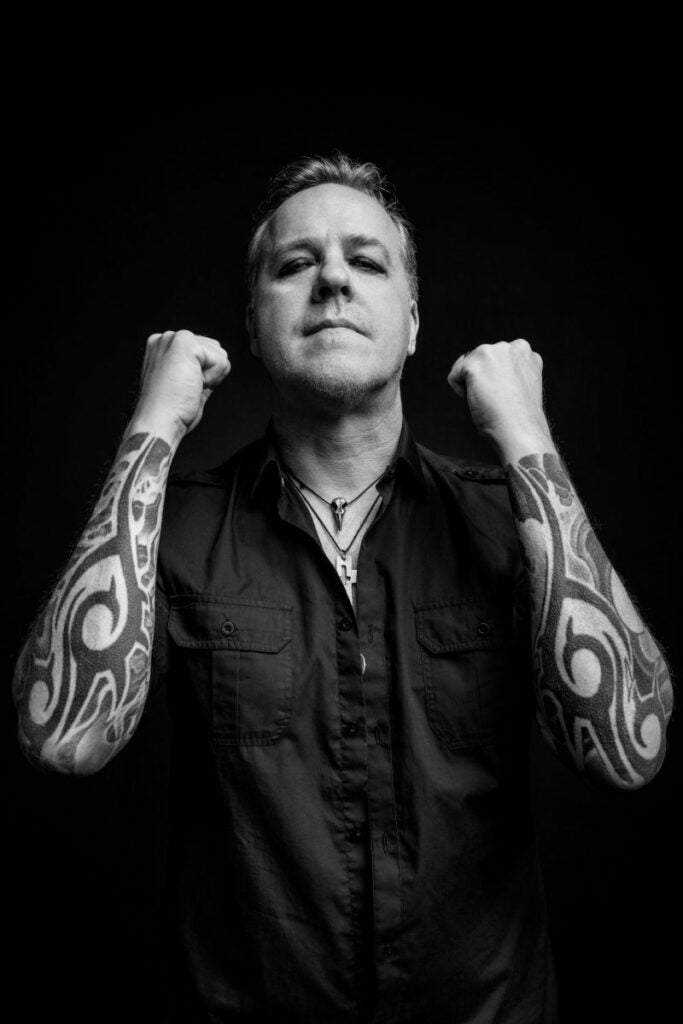
The timeframe of these images are very specific - from 2002 to 2003. What as unique about that time for you that prompted you pick up the camera?
Bell - I have had the same 35mm Canon A1 camera since 1982. I have been using it ever since for personal photos, while also experimenting with different techniques. In 1987 I attended The Corcoran School of Art in Washington DC on a full scholarship, where I focused on fine art, photography, creative writing and graphic design before dropping out and moving to LA.
This time period was inspirational for me in many ways. I had traveled from LA to PA on a journey for "self discovery". After 3 months of recording music that would become my independently released ICONOCLAST EP, I found an apartment in the borough of Milton. The apartment I found overlooking the West Branch of The Susquehanna River was unique and inspiring. I wrote music and words daily, and the more I immersed myself into this small town the more I fell in love with it.
NYC is only 2.5 hours away, and a straight shot over I-80. I had traveled to NYC on many occasions, where I would visit museums, galleries, and attend concerts. In one gallery I discovered the photographer Todd Hido. His images taken at night utilizing extended exposure was reminiscent of the photos I had experimented many times. I believe it was this exhibit that pushed me to continue my experiments with my photography.
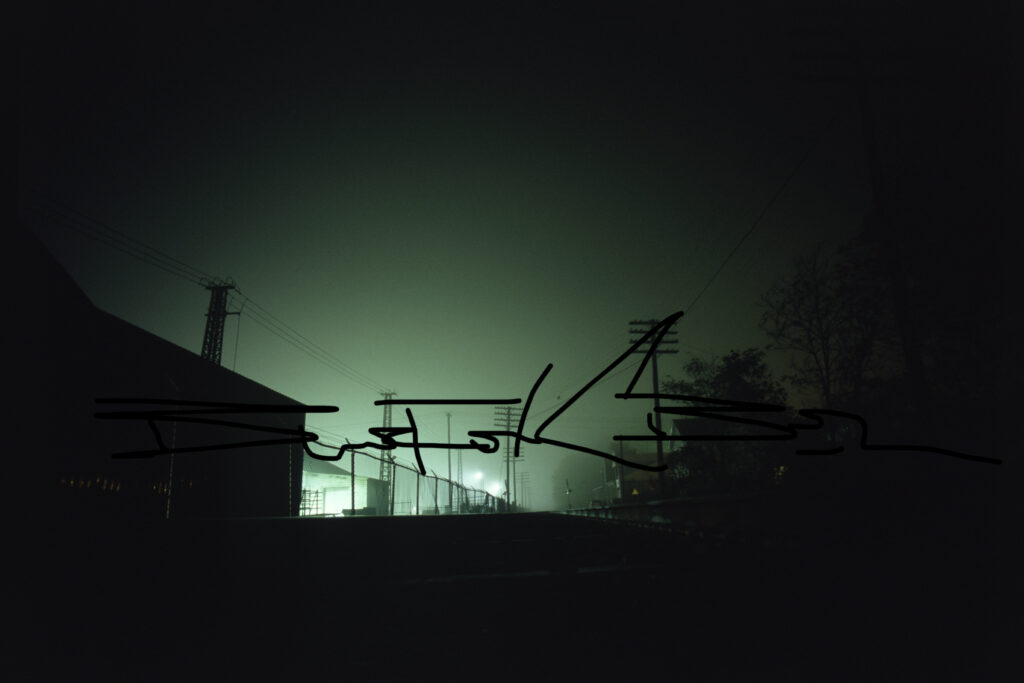
Railroad Tracks at Locust Street Crossing. Eastside of AC&F factory facing north. The Camera is set on a railroad tie between the rails. Fluorescent factory lighting creates the mysterious green glow that dissolves into the night fog, like a vignette over the point at infinity. The geometry of the powerlines emphasizes my long journey into night.
Presumably, you have held onto these photos for two decades. What was the catalyst that motivated you to finally release them?
Bell - Time is an illusion. I have always believed that the RIGHT TIME would present itself. Over the years I have been building and networking my portfolio to various galleries in hopes to show my work. The time for this show finally came to fruition when my friend Vincent Castiglia asked me to DJ his grand opening for his new gallery/studio. It was during this visit that we spoke about my desire to present my photos while showing Vincent my portfolio. After a few months Vincent asked me to show my work at his gallery.
With regards to the Dye Sublimation process - how did you arrive at presenting your images in such a unique way? Was this something deliberate or was it more a trial and error process?
Bell - I learned about the dye-sub process when I released an original image for a limited release on my website. I experimented on various photo paper for this black and white image. Not really happy with the paper prints, my printer for this image suggested I try the Dye Sublimation process, on brushed aluminum. I was blown away by the clarity of detail, and the depth of grayscale. This process is remarkable.
For PARADISE FOUND I also experimented with various photo paper. I was looking for a paper that did not have a gloss, sheen or glare. I wanted the blacks to be infinite in depth without “light pollution”. The paper I loved was too sensitive, and would need a full glass frame to protect it.
My printer for this project, Ryan Speth, suggested the DYE-SUB process with a matte finish, to decrease glare. The test print proved to be the best process for these images. Not only accenting the blacks, and capturing the full details, it was also more durable. These images printed in this process became integral to the concept of my show that is accenting this post industrial town in PA.
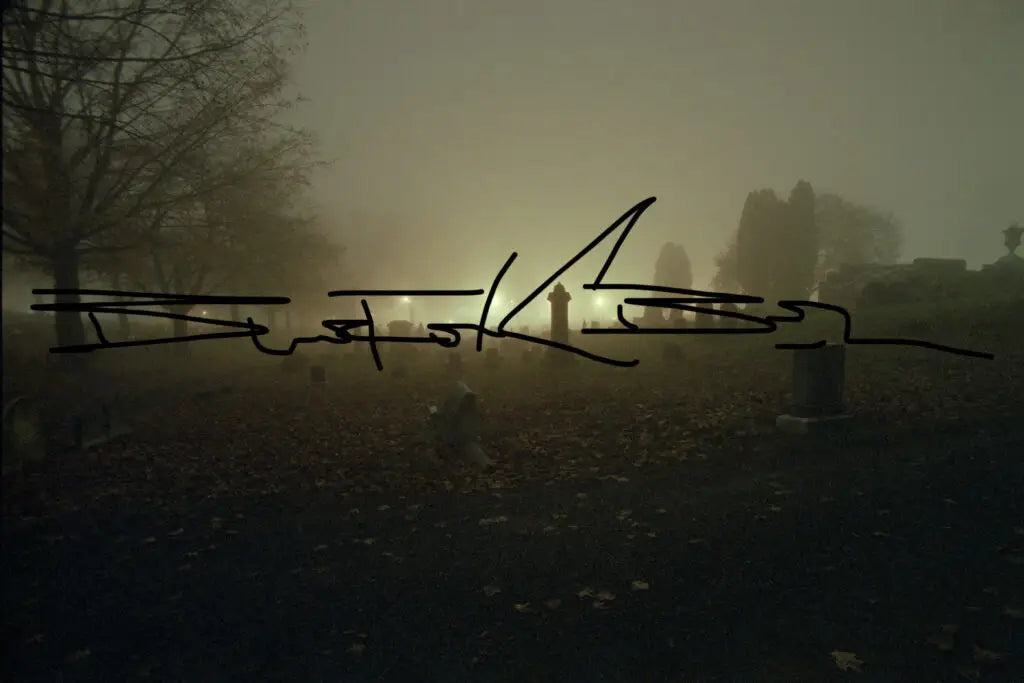
Harmony Cemetery. Willow Street. Facing west. Incandescent streetlights glow through the fog. The light creeping over the fallen leaves, silhouetting the headstones and tombs. The line of trees fading into the distance creates a cinematic depth of field, accentuating the lone quietude in this photograph, the same awareness I experience to this day when I am walking the cemetery grounds. Many tombstones are from the 18th century, Civil War era. The past surrounds me and hangs heavy like the dense fog enveloping Milton.
The idea of futuristic dystopia and mechanical upheaval has long been prevalent in your music. Did you pick up the camera with the intention of focusing on the same things aesthetically or did you just find yourself naturally drawn to that kind of imagery?
Bell - It is true that my personal aesthetic leans toward dystopian/industrial visions of the future, as well as the past. My eye has always been drawn to landscapes and architecture. The art I am attracted to are landscape and still life; Ansel Adams, Sebastio Salgado, Todd Hido, Nick Brandt, Monet, Van Gogh, Gerhardt Richter, to name a few.
I have tried portrait photography, but I never seemed to grasp the nature of it. I have a spatial perspective, I see “spaces” as a scene for a movie set. I am attracted to high contrast where natural and man made light and shadow create an image accenting the focal object. Architectural lighting that defines lines and edges. I see everything around me like a movie scene, and I do my best to capture exactly what I see with my camera.
There seems to be an interesting subtext to the Susquehanna Valley where you took these photos. For someone that has spent a career exploring the futuristic, what was it like to immerse yourself in the past of a forgotten manufacturing town?
Bell - To understand the future, one must study the past. My visions and words are rooted in human history; the development of machines, the industrial revolution, the tech boom of the late 90’s, and now AI. I can “see” the future that the past has wrought upon humanity. “Discovering” Milton was providence. Immersing myself was necessary for my consciousness, and my soul. This time period of my life was a time of self inflicted upheaval, and serendipitous inspiration.
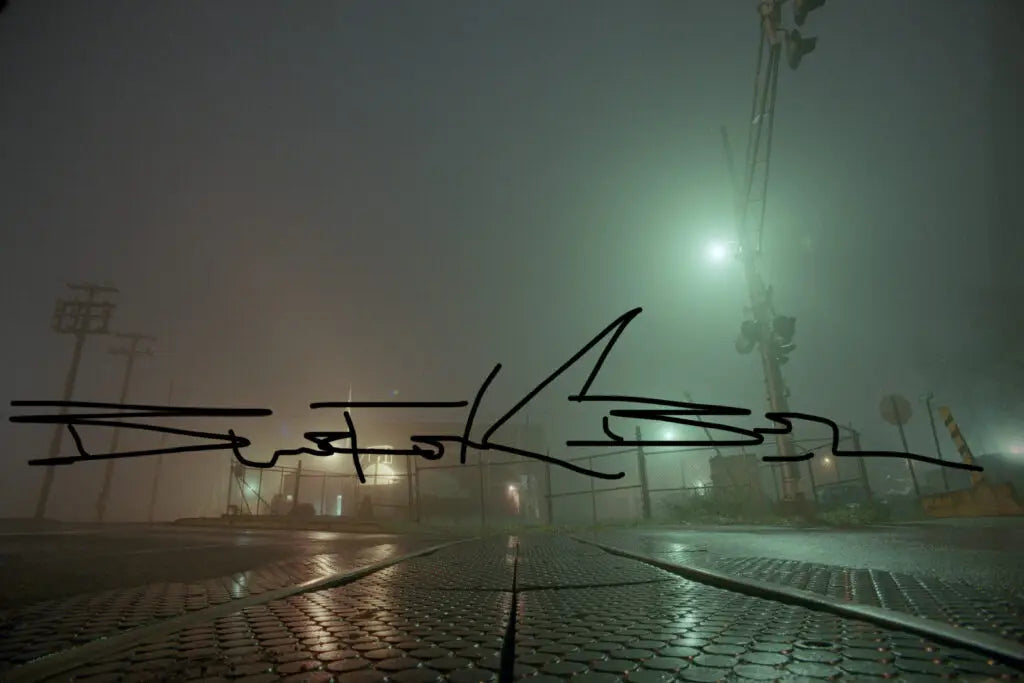
Railroad Tracks at Mahoning Street Crossing. Facing south. Feeder tracks that once led to the Susquehanna Silk Mill. This building was beautiful, and unique, and it has been razed, and the track has been paved over since this photo was captured. The one tungsten light on the structure, surrounded by the green, fluorescent lights creates a red hue in the middle of the image. Another perfect blend of colors. One cool aspect about living in a small town is that in the middle of the night, I was able to set up my camera in the middle of the street without having to worry about any traffic obstacles.
How is Paradise Found indicative of your steps as an artist? You have long established your prowess as a musician - what does this first show mean personally and what does it begin for you professionally?
Bell - First and foremost, I have always considered myself an artist as I have been honing my talents and aesthetic over time. My time in Milton lifted my soul, and I learned during this time that "I must always be true to myself". It is my goal to present myself as a multi-faceted artist. I have been slowly peeling the layers to expose these aspects of my talents; music, writing and photography.
I am exhilarated for my solo exhibition. As an artist this is truly a “dream come true”, and I am looking forward to networking with more galleries to present my works. I still have an entirely separate series of photos to present.
This layer only adds to my personal repertoire of art that I am able to present for the public.
Music is still VERY important to me, and I am currently working and writing new music with great musicians/producers. I have been writing stories for graphic novels, as I recently have for the PANTERA 30 Year Anniversary for Vulgar Display of Power, which is scheduled to be released this month. I have been invited to write another story for a future release from the same publisher, Z2. Stay tuned for more information!
For me, Paradise Lost exposes another layer of my talents that makes sense. I create art for myself. Not everyone will like it, but those that do will be quite happy. This is reason enough to continue my artistic journey exploring other mediums besides music. In this day and age it is necessary for me to be a diverse artist. I will always be aligned with my aesthetic, and my concepts will recognizably be those of Burton C. Bell.
Burton C. Bell's Paradise Found opens at Vincent Castiglia Gallery in Fort Lauderdale, Florida on March 11th with public viewing open from 7pm to 9pm. For more information visit the gallery online - HERE
To stay up to date on all things Burton C. Bell visit him online - HERE
